Damage Done. When COVID-19 hit Latin America and the Caribbean in 2020, the region was already reeling with economic and political uncertainty threatening in some fashion nearly every nation from Mexico to Argentina. The International Monetary Fund (IMF) estimated in their April 2020 projections that in 2019 the Latin American region GDP growth was flat at .02% and in 2020, with the pandemic in full force, fell to -7.0% [-7.4% according to the Inter-American Development Bank (IDB) 2020 estimates.]. According to the IDB the -7.4% drop was the largest on record for a single year and was the largest drop since 1821.
Eric Charles Parrado Herrera, chief economist of the IDB wrote of the COVID-19 pandemic’s impact on an already shaky Latin American economy: “This crisis began to unfold as countries were already facing a complex set of preexisting conditions, including low levels of productivity and simmering social discontent. Perhaps a fitting analogy to describe the situation would be that, in 2019, the region was flying with one broken engine. In 2020, its other engine also took a hit.”
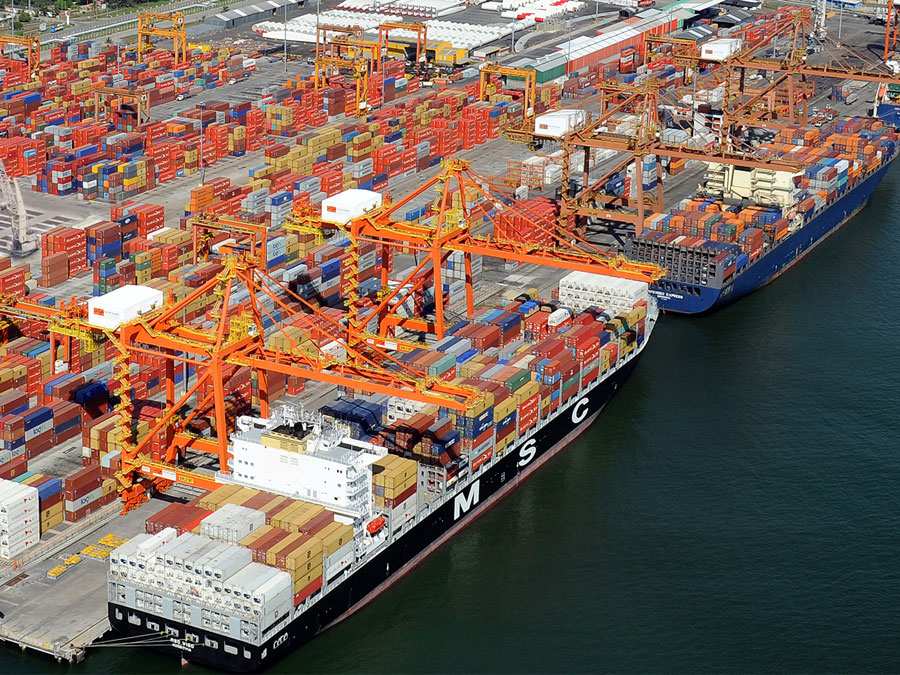
Tradeoffs: The 2021 Rebound
Despite the serious economic damage done by the pandemic in 2020, Latin America rebounded in 2021, as international trade picked up and commodity prices increased. The rally was largely led by exports. According to the IDB, the value of exports from Latin America grew 8.9% in the first quarter of 2021 compared to the same period in the previous year.
While the nearly 9% growth in value buoyed export numbers for the first quarter of 2021, Latin American export volumes actually fell by an estimated 2.2% over the first quarter.
The fall in export volumes underscores the fragile underpinnings of the recovery. As the IDB reported, “In the first four months of 2021, the prices of various commodities exported by Latin America rose close to historic highs. The upward trend in the price of extractive products was more pronounced, particularly in the case of iron ore (93.6%), copper (57.9%), and oil (41.7%). The performance of agricultural products was more varied: exports of soybeans grew by 60%, sugar by 27%, and coffee by 11.9%.”
Not unsurprisingly, Latin American nations whose exports were largely fuel and minerals, like Chile, Colombia, Peru, and Venezuela had lower export volumes. Whereas, countries that specialize in agricultural products, like Argentina,
Brazil, Paraguay, and Uruguay, or manufactures, like El Salvador and Mexico posted higher export figures.
Equally unsurprising, the biggest beneficiary of Latin America’s export surge in 2021, was China. IDB estimates that exports from Latin America to China increased by 34.7% in the first quarter of 2021, compared to the same period a year before. Exports to the U.S. and EU were also estimated to have increased 3.9% and 4.0% respectively. Perhaps, the biggest surprise was that intraregional exports climbed by 11.6%. Intraregional trade has long been an issue in Latin America and the rise could represent a new trend of more internal trade for the region.
The Big Squeeze: Latin America, U.S. and China
Over the past two decades the U.S. and China have been tangled in a scuffle for trade and economic influence in Latin America. The ante grew as the Trump Administration’s relationship with China deteriorated into an all-out trade war, with tariffs and trade barriers de rigueur. Latin America’s trade was collateral to the overarching interests of both the U.S. and China.
After China and the U.S. inked their “Phase One” trade deal in January 2020, it was naturally assumed by most observers that the trade wars had effectively ended. Such notions were premature as now with the Biden Administration, while the shrill tone might be gone (along with the Tweets), the focus remains much the same. And Latin America is still being squeezed between the trading and economic interests of the People’s Republic of China (PRC) and the U.S.
In September, Felipe Larrain and Pepe Zhang co-authored an article in Americas Quarterly, entitled “How Latin America Can Navigate the China-US Trade Wars,” to chart a course between the two interests of the global super powers. Larrain is a former minister of finance for Chile and Zhang the associate director of the Atlantic Council’s Adrienne Arsht Latin America Center, who co-authored a study LAC 2025: “China-LAC Trade 2035: Four Scenarios.”
In the article they wrote, “Trade between China and Latin America and the Caribbean (LAC) held steady at approximately $315 billion in 2020, practically unchanged from 2019. This is remarkable because the pandemic wreaked havoc on LAC exports overall in 2020, causing an estimated 11.3% year-on-year contraction (including a -14.6% decline in shipments to the U.S.). In the meantime, a fast-recovering China stood out as the only exception among LAC’s major destination markets by registering a 2.1% year-on-year increase in exports from LAC.”
From the U.S. perspective, China’s trade push into the LAC “reflects China’s global “soft power” efforts and “influence operations” worldwide,” as Congressional Research Service (CRS) wrote in a July 1, 2021 brief.
A critical feature of the PRC’s campaign is providing capital and investment for LAC projects. According to the CRS figures, between 2005-2020 PRC financing in the LAC amounted to $137.8 billion, “with a majority of the lending (68%) for energy projects, and (18%) for infrastructure projects.” Venezuela, has by far been the biggest recipient at $62.2 billion with Brazil $29.7 billion, Ecuador $18.4. billion, and Argentina $17.1 billion following. The U.S. has said these loans and other programs are “debt traps” but trade figures would suggest that it has paid off for China. However, since 2020 China’s LATAM project financing has slowed to a trickle, although trade has boomed.
The Chile Model
Chile is frequently cited as a model for how LATAM nations can navigate the troubled trade war waters of U.S.-China. For over two decades Chile, through a succession of governments from both left and right, has managed to build a trading relationship with China. It largely started with the 2005 Trans-Pacific Strategic Economic Partnership and later the 2018 Comprehensive and Progressive Agreement for Pacific Partnership.
In 2018, Chile joined China’s Belt and Road Initiative, and in July 2019, the country was accepted into the PRC’s associated institution for finance, the Asia Infrastructure Investment Bank. More recently, in 2019 Chile and China signed a multi-year “Joint Action Plan” that highlighted fourteen areas for advanced cooperation.
The relationship with the PRC was more than ink on a paper, as trade from 2002 to 2019 grew from $2.3 billion to $39.2 billion. Chile’s exports are largely commodities like copper (amounting to nearly half of Chile’s copper exports) and nitrates. China has also invested heavily in the extraction industries and in 2019, Chile approved a $4.1 billion deal that enabled the Chinese firm of Tianqi to take a 24% stake in Chile’s SQM to pursue the extraction of lithium from the Atacama salt flats – an upstream investment of sorts to support the export of China’s EV autos to Chile, their largest market.
But these exports have been complemented by higher end exports like fruits (blueberries, cherries and grapes) and wines.
Chile in turn has bought electronics, motor vehicles and other consumer items from China. The relationship hasn’t been without incident. Illegal Chinese fishing within EEZ, the removal of Chinese Ambassador Xu Bu, for being overly aggressive and the rumors in the Chinese media of Chilean produce being COVID-19 tainted are among a few of the recent points of contention.
Nonetheless, Chile’s ability to navigate in the narrow spaces of the U.S.-China trade wars stands out in the LAC. And for the U.S. to regain prominence in trade, it is clear from the Chile example that more engagement is needed.
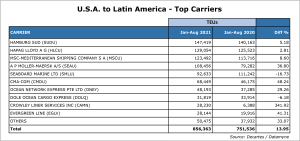
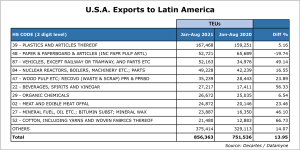
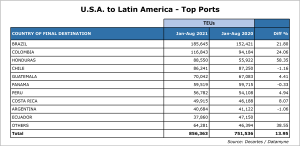
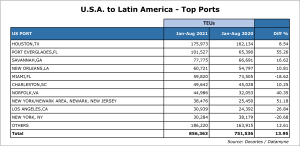
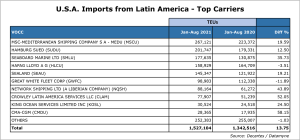
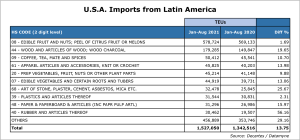
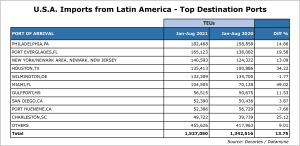


_-_127500_-_1da204f56eddee4a9ff1d6f8fe7f7f4e89a54723_lqip.jpg)



